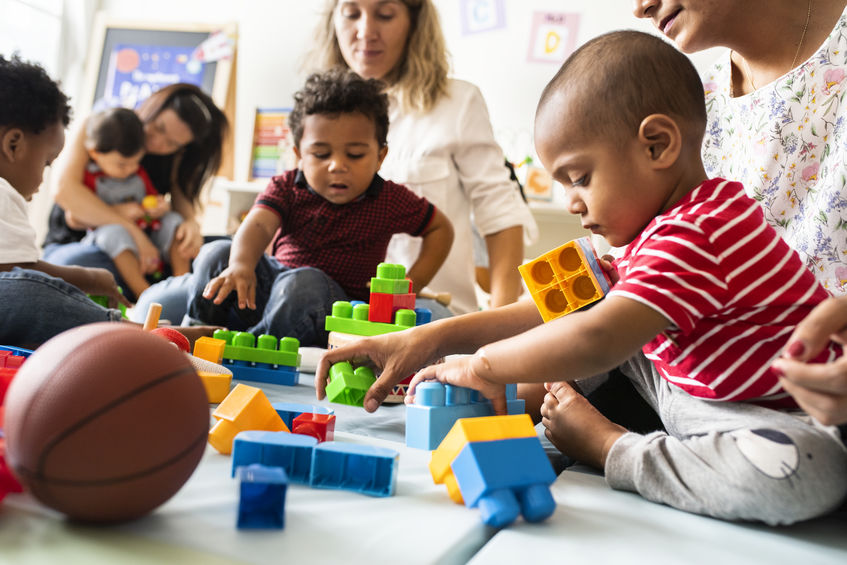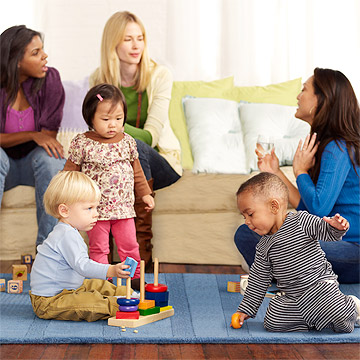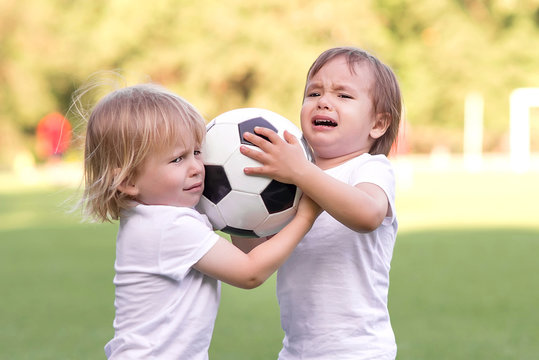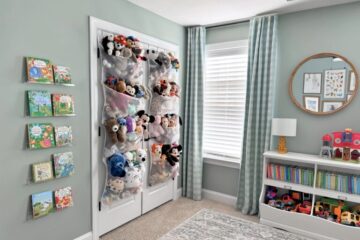
If your child’s like mine, s/he’s been playing with other kids for a while now. But now that s/he’s entering the preschool years his/her social life will pick up significantly, and his/her playdates may take place with less familiar pals on less familiar territory. By keeping some guidelines in mind, you can help ensure that squabbles, scuffles over toys, and tears at pickup time don’t mar your child’s (or his guests’) playdate fun.
Making a “date”
Let your child take the lead. Ask him who he’d like to invite over. If he doesn’t have a preference, take your cues from who he seems drawn to at daycare, preschool, or your local playground.
Remember, too, that playmates don’t have to be the same age. In fact, pairing kids of different ages has some advantages: The older child will help direct play for his young friend, and he’ll also relish being the “big kid.”
Keep it small. Three really is a crowd when it comes to preschool playdates. Instead, limit playdates to one friend at a time. Otherwise it’s too easy for one child to feel left out, and sharing becomes that much more difficult.
Keep it short. An hour is fine for a first visit, and two hours is plenty for a get-together between seasoned preschool pals. Any longer than that and you’re likely to have two bored, tired, and cranky kids on your hands.
Get the facts on food. Because playdates often involve snacks, be sure to ask your guest’s parents about food allergies or sensitivities — or just what their probably picky preschooler likes to eat. Knowing a child’s preferences ahead of time can help head off a snack-time showdown.
Consider inviting parents, too. For very young children who aren’t used to being away from mom or dad, and even for older kids making their first visit to your home, consider making the playdate a family affair. Invite the other parent (or caregiver) to join you for coffee and a chat while the kids play, or let her know that it’s fine to hang out for a while until her child settles in. Many kids need to work up to the “drop-off” playdate, and many parents are wary about leaving their children in the home of someone they don’t know very well.

Prepping for a playdate
Play down TV and computer games. Playdates are supposed to help kids improve their social and communication skills — something that’s hard to do when they’re staring raptly at a flickering screen or impatiently waiting their turn. Save the video or computer game for the post-playdate wind-down, and plan activities the kids can do together instead. (Let your guest’s parents and your own child know about this no-TV policy ahead of time. That way, the playmate won’t show up expecting a private viewing of the new video your child’s been bragging about.)
Let your child help set the activity agenda. Talk about the importance of making his friend feel welcome and then ask him which activities or toys he thinks his playmate might enjoy.
Hide favourite toys. Toy tug-of-wars are common for kids this age. You can talk about sharing until you’re blue in the face, but expecting your child to be generous with his most cherished playthings is probably expecting too much. If your child has a few favourite toys that you know he’s loath to share, help him put them away before his friend arrives. Then set out some collaborative games and toys (blocks and play doh are good bets), as well as a few playthings he won’t mind sharing. (But don’t be surprised if he suddenly tries to lay claim to a neglected toy as soon as his pal takes an interest in it!) Help ease your child’s tendency to hoard toys by explaining to him that his friend won’t be allowed to take any toys home.
Plan some “break time.” Besides having some healthy snacks on hand, it’s a good idea to have a quiet activity ready in case the kids get too wound up. Other guided activities might include baking cookies or reading a book together, making a brief excursion outside, or doing a restful arts-and-crafts project.
Playdate protocol
Get connected. As with any date, the first few minutes of a playdate can be awkward. To help the get-together get off the ground, spend some time helping the kids connect. You can do this by setting up a game or pulling out a few toys they can play with together (such as building blocks or a train set). Once the children are playing easily with one another, take your cue and fade into the background.
Be firm about clean-up. Before the kids get too involved in their play, explain that they need to clean up one activity before they can move on to the next. Waiting until the end of the playdate to initiate cleanup time leaves you with no leverage, and a much bigger mess. If the kids simply refuse to tidy up, you can hold out a carrot — literally: “We’re ready for snack time, you two — but you have to put the blocks away first.” Of course, parents of younger kids will need to actively guide them during cleanup time.
Offer choices to spark play. You can help inspire open-ended play. Some suggestions: Set up a play dough table; fill a plastic basin with water and let the kids dump, pour, and stir the water (never leave them alone, though — even a few inches of water can present a drowning hazard); stock a small sandbox or sand table with shovels and pails; or put out paper and crayons or finger paints. Give the kids two or three options and let them drift from one activity to another (or even create their own games) as the mood takes them.
Make yourself available. Young children need help establishing and maintaining interactions with each other, so don’t expect to sit back and relax while you’re hosting a playdate. You need to be a constant — though unobtrusive — observer and occasional cheerleader.
Resolving conflicts
Let kids work out their own problems. While you should keep an eye on everything the children do during the playdate, don’t jump in at the first sign of trouble. Small disagreements seldom last long, and if you hang back you’ll often find that the kids work out their own resolution.
Intervene rarely, but firmly. If a conflict is escalating into verbal or physical confrontation, it’s time to step in. Remain calm and make firm statements like, “I can’t let you do that to Kyle.” Explain that words and actions that hurt are not acceptable, and then coach the kids on coming up with a compromise to the original problem. If the fighting continues, separate the children for a while or introduce a new activity that’s less likely to cause conflict.
Pile on the praise. One way to keep negative behavior to a minimum is to consistently acknowledge good behavior. Statements like, “Wow, you were so nice to let Henry play with your favourite train! That made him really happy!” encourage kids to keep it up.

Saying goodbye
Give fair warning. When the end of the playdate draws near, remind the kids that their time together is almost over. (“Five more minutes, guys. Time to finish your game.”) If the playdate was a success, talk with them about what they enjoyed this time and what they might like to do at their next get-together: “You two had such fun building the block tower together. Would you like to play Legos next time?”
Send a memory home. If the kids created anything tangible (drawings, crafts, cookies), send your guest’s creation home with him. If not, consider snapping an instant photo of the children together and offer it as a parting gift. Kids are often so excited to share these treasures with their parents that it helps ease them out the door at the end of a playdate.
Take the playdate on the road. Some parents find that rather than leaving both kids wailing (and one of them kicking and screaming) when a guest’s parent arrives to drag him out the door, it’s easier to end the playdate by getting everyone out of the house.
If it’s feasible, consider walking or driving your guest home, then make the trip there seem like an adventure: Have the kids race to see who can get their shoes on first, and talk about all the different sights you’ll see on the way home. You just might find that the goodbyes go more smoothly on your guest’s doorstep than they would on your own.




0 Comments